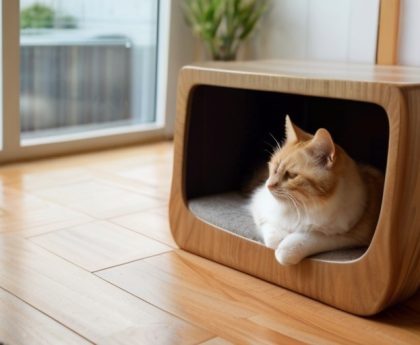Effective Strategies for Harmoniously Introducing a New Cat into Your Home
Introducing a new kitty to your home? No sweat! It’s all about making sure they get along with your current furballs. Start by giving each cat their own chill zone. Let them sniff out each other’s scent without meeting face-to-face just yet.
Slowly, let them have supervised meet-ups in chill spots, watching how they act around each other. Keep an eye out for any hissy fits or unfriendly gestures. A little treat and a pat on the back can work wonders in getting them to be pals.
Make sure every cat has their own stuff like food bowls, litter boxes, scratching posts, and cozy corners. This stops them from fighting over who gets what and helps them feel safe and sound.
Take Sarah’s story, for instance. She brought home a playful kitten, Luna, while having an older cat, Oliver. Without easing them into it, things got a bit tense. But with expert advice and a step-by-step plan, they became best buds!
This just goes to show, with a bit of know-how and patience, you can have a peaceful cat kingdom in no time!
Pre-Integration Preparations
Ready to welcome a new kitty? First up, take a look at your current cat’s vibes and habits to ensure a smooth intro.
Evaluating Your Existing Cat’s Personality and Behavior
Cats are as unique as us! Here are a few things to check:
– Body Language: Look for signs like a stiff stance or big eyes, showing they’re not too pleased. A relaxed cat usually means they’re cool with new friends.
– Socialization: Cats used to hanging with other animals are more likely to welcome a newbie. If they’re more of a loner, they might need extra time and patience.
– Activity Level: Some cats are all about play, while others prefer peace and quiet. Finding a match in energy levels can help avoid kitty spats.
– Reactivity to Changes: See how your cat handles new stuff around them. If they get stressed easily, you’ll need to make extra sure they’re comfy before bringing in a new friend.
And don’t forget, each cat has their own quirks, so keep an eye out for those too!
Pro Tip: Give each cat their own space at first, letting them get to know each other by scent before actually meeting. This helps them start off on the right paw.
Introducing Scent Exchange: Step 1 of Integration
Let’s talk about scent exchange to help your new cat fit in. It’s all about them getting used to each other’s smell and setting the stage for a buddy-buddy relationship.
How to Implement Scent Exchange
Here’s a quick 4-step guide:
1. Set up the spot: Pick a place for this scent-swapping party and make sure it’s well-aired.
2. Choose the scents: Pick smells that are calming and not too strong. You want scents that are cat-friendly and don’t trigger any sneezes.
3. Introduce scents bit by bit: Start with gentle smells in places they hang out together. Watch how they react and up the scent game as needed.
4. Get feedback and tweak as needed: See how the cats and humans feel about the scents. You might need to switch things up based on what you find out.
Remember, all scents should be safe for cats and humans alike.
Here’s a real-life example. A coffee shop used scent exchange to add to the cozy vibe. They chose scents that went well with the smell of coffee. Customers loved it, and it helped people connect. Just like that, scent exchange can make a big difference!
Introducing Visual Interaction: Step 2 of Integration
Next up, visual interaction. This is where your cats get to see each other and start figuring out how to get along.
Managing Visual Introduction Sessions
Structure is key here. Plan out how these visual intros will go, like who, what, where, and how long. Mix in fun activities to keep things interesting.
Take the case of a software company that messed up their visual intro. It led to a lot of confusion and unhappy customers. A clear plan can make all the difference.
Next, get ready for “Physical Interaction: Step 3”. This is where the real cat bonding starts!
Introducing Physical Interaction: Step 3 of Integration
For a smooth cat mix, handling the first meet-ups is super important. It’s all about guiding them right and keeping an eye on how things go.
Supervising and Guiding Initial Interactions
Here’s how to make the first meetings go smoothly:
– Train your cats on what to do.
– Give clear instructions and use visual cues.
– Break down big steps into smaller ones.
This way, your cats get the hang of interacting without any hiccups.
Identifying and Addressing Potential Challenges
When mixing cats, you might hit some snags. Here’s how to tackle them:
– Data Incompatibility: Sometimes, different cat personalities clash.
– Poor Communication: Misunderstandings can happen, so stay alert.
– Software Compatibility: Just like tech, cats need to sync well.
– Time Constraints: Rushing things can make it harder.
Solutions:
– Understand each cat’s personality.
– Keep communication open and frequent.
– Have regular check-ins on progress.
– Make sure you’ve got the right resources and help.
Ensuring a Safe and Harmonious Living Environment
To make sure all your cats are happy, give each of them what they need. This means having enough of everything, like food bowls and litter boxes, spread out nicely around the house.
Providing Ample Resources for Each Cat
Cats love having their own things. So, think about what each cat likes. Different spots for litter boxes, places to scratch, and toys can keep them busy and happy. Watch how they act and change things up as needed.
Like Whiskers, who needed his own space to stop knocking things over. Once he got his own shelves and cat tree, he was a much happier kitty.
Monitoring and Gradual Integration Progress
Keep an eye on how your cats are getting used to each other. Look for good signs like shared values, teamwork, and getting things done better together.
Pro Tip: Talk to your cats (yes, really!) to see how they’re feeling. Their reactions can tell you a lot.
Troubleshooting and Seeking Professional Help
Sometimes, cats just don’t click. Here’s what you can do:
– Watch how they act around each other.
– Take it slow with introductions.
– Ask experts for advice.
– Use tricks to help them get along.
– Give them a safe spot to relax.
Patience is key. Each cat is different, and they need time to adjust.
Take Lisa’s case. Her new cat was super shy at first. But with some expert advice, he warmed up to his new buddy.
When in doubt, ask for help. It’s all about keeping the peace!
Conclusion: Celebrating Successful Integration
Bringing a new cat home can be a big deal, but with the right steps and a bit of patience, you can make it work. Give each cat their own space, set up a routine, and be mindful of their unique needs. Remember, every cat has its own story. Just like Milo and Luna, who took some time to get used to each other but ended up as besties.
Frequently Asked Questions
Q: How do I introduce a new cat?
A: Take it slow! Start with separate rooms and let them meet bit by bit.
Q: How long to adjust?
A: Usually a few weeks. Keep things calm and give them lots of love.
Q: Boy or girl cat?
A: It’s more about their personalities than gender. Watch how they interact.
Q: Stop territorial fights?
A: Give each cat their own stuff and space. Use treats to encourage good vibes.
Q: Signs of getting along?
A: Look for happy body language, grooming, and playing together. They might even share a snack or a nap!
Q: What if they don’t get along?
A: Check with a vet or a cat behaviorist. They can give you tips on how to help them get along better.





